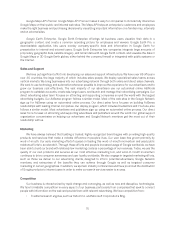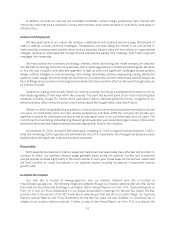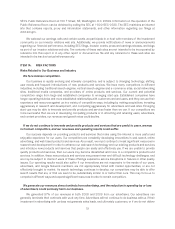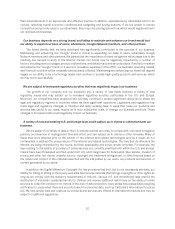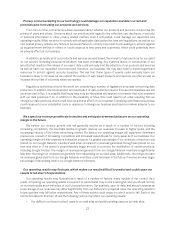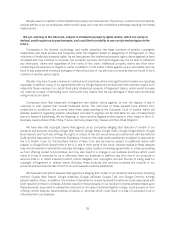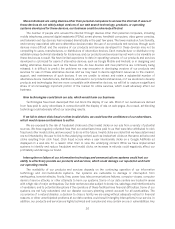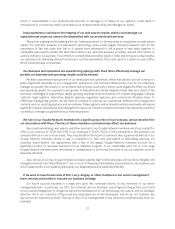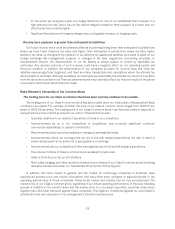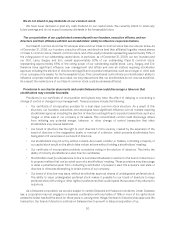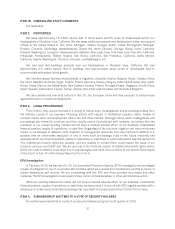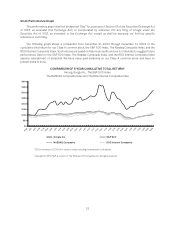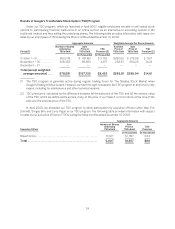Google 2009 Annual Report Download - page 42
Download and view the complete annual report
Please find page 42 of the 2009 Google annual report below. You can navigate through the pages in the report by either clicking on the pages listed below, or by using the keyword search tool below to find specific information within the annual report.• Our ability to monetize (or generate revenues from) traffic on our web sites and our Google Network
members’ web sites.
• Our ability to attract advertisers to our AdWords program.
• Our ability to attract web sites to our AdSense program.
• The mix in our revenues between those generated on our web sites and those generated through our
Google Network.
• The amount of revenues and expenses generated and incurred in currencies other than U.S. dollars, and
our ability to manage the resulting risk through our foreign exchange risk management program.
• The amount and timing of operating costs and capital expenditures related to the maintenance and
expansion of our businesses, operations, and infrastructure.
• Our focus on long-term goals over short-term results.
• The results of our investments in risky projects.
• Our ability to keep our web sites operational at a reasonable cost and without service interruptions.
• Our ability to achieve revenue goals for partners to whom we guarantee minimum payments or pay
distribution fees.
• Our ability to generate significant revenues from services in which we have invested considerable time
and resources, such as YouTube and Google Checkout.
Because our business is changing and evolving, our historical operating results may not be useful to you in
predicting our future operating results. In addition, advertising spending has historically been cyclical in nature,
reflecting overall economic conditions as well as budgeting and buying patterns. Also, user traffic tends to be
seasonal. Our rapid growth has tended to mask the cyclicality and seasonality of our business. As our growth rate
has slowed, the cyclicality and seasonality in our business has become more pronounced and caused our operating
results to fluctuate.
Our intellectual property rights are valuable, and any inability to protect them could reduce the value
of our products, services, and brand.
Our patents, trademarks, trade secrets, copyrights, and other intellectual property rights are important assets
for us. Various events outside of our control pose a threat to our intellectual property rights as well as to our
products and services. For example, effective intellectual property protection may not be available in every country
in which our products and services are distributed or made available through the internet. Also, the efforts we have
taken to protect our proprietary rights may not be sufficient or effective. Any significant impairment of our
intellectual property rights could harm our business or our ability to compete. Also, protecting our intellectual
property rights is costly and time consuming. Any increase in the unauthorized use of our intellectual property
could make it more expensive to do business and harm our operating results.
Although we seek to obtain patent protection for our innovations, it is possible we may not be able to protect
some of these innovations. Changes in patent law, such as changes in the law regarding patentable subject matter,
can also impact our ability to obtain patent protection for our innovations. In addition, given the costs of obtaining
patent protection, we may choose not to protect certain innovations that later turn out to be important.
Furthermore, there is always the possibility, despite our efforts, that the scope of the protection gained will be
insufficient or that an issued patent may be deemed invalid or unenforceable.
We also face risks associated with our trademarks. For example, there is a risk that the word “Google” could
become so commonly used that it becomes synonymous with the word “search.” If this happens, we could lose
protection for this trademark, which could result in other people using the word “Google” to refer to their own
products, thus diminishing our brand.
24



